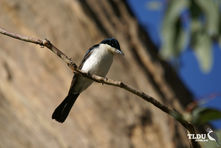
Shoppers Feedback:
Jan 17, 2017
Hello Ros,
I have now paid the invoice, but I would like to write to you just to say a big THANK YOU for getting me the Penguin!
The ChatterMate Penguin became a nice memory for me when I was in New Zealand, and I am so greatful to you for arranging so that I could have it! :-)
Thank you so much!!!!!!!!!!!
Regards,
Malin
Hi Ros,
Many thanks for your very kind email. I really appreciate your prompt reply!
I appreciate your advice regarding the decorations and customs. These are a gift for my daughter’s exchange student family so when she returns home on the weekend I will show her and see if she loves them as much as I do!
Thanks so very much again - I am truly grateful for your kind assistance.
Kind Regards
Bernadette
Ros,
Thanks again for the great customer service. It's a refreshing change!
Best regards,
Trevor
Hey Roz,
Thank you for your emails. Just loved my first order. The cute little Aussie bush critters are going to be used for an office Christmas decoration. My colleagues also liked them and talked about making an order to your site. I'll send you a photo when completed.
I'll be ordering more to send to my daughter's host family in America.
Fabulous service from you.
Kind regards,
Michelle
Thankyou. Order arrived today. One very happy grandson with his new beastly binoculars.
Regards,
Irene
- Home
- Wild Wonders
- Shop
- Aromas of Australia
- Australian Made
- Books
- Book Marks
- Christmas Decoration Sale
- Christmas Decorations
- Clocks
- Drink Holders
- Garden & Outdoor
- Gift Wrapping & Cards
- Home & Giftware
- Jewellery
- Keyrings
- New Products
- Pencils & Pen Holders
- Photo Frames
- Plush Toys
- Plush with Sound
- Sheepskin Rugs
- Stationery
- Stone Carvings
- Toys & Games
- Travel Goods
- Wedding
- Wild Figurines
- Wildlife Safety Products
- Wind Chimes
- Wine Charms
- View All Products
- Wildlife
- Australiana
- Explore
- Contact Us

Quick Facts
| Length: | 16 cm |
| Height: | - |
| Weight: | - |
| Colour: | Glossy blue-black above and chest and white below |
| Habitat: | Tall forests preferring wetter habitats such as heavily forested gullies but not rainforests |
| Food: | Insects caught on the wing |
| Predators: | - |
| Status: | Not Present in NT. Rare in SA. Secure in other states and territories in Australia |
The Satin Flycatcher is a small blue-black and white bird with a small crest. The sexes are dimorphic (have two forms). Males are glossy blue-black above, with a blue-black chest and white below, while females are duskier blue-black above, with a orange-red chin, throat and breast, and white underparts and pale-edged wing and tail feathers. Young birds are dark brown-grey above, with pale streaks and buff edges to the wing feathers, and a mottled brown-orange throat and chest. It has sometimes been called the Shining Flycatcher, but this is the common name of another species, M. alecto. It is an active, mobile species
The Leaden Flycatcher is very similar, with males less glossy about the head and throat and the females and juveniles generally lighter blue-grey above. Both sexes of the Broad-billed Flycatcher are also similar, but lighter in colouring, and have a broader, boat-shaped bill; also, this species only overlaps in range with the Satin Flycatcher in far northern Queensland.
The Satin Flycatcher is found along the east coast of Australia from far northern Queensland to Tasmania, including south-eastern South Australia. It is also found in New Guinea. The Satin Flycatcher is not a commonly seen species, especially in the far south of its range, where it is a summer breeding migrant.
The Satin Flycatcher is found in tall forests, preferring wetter habitats such as heavily forested gullies, but not rainforests.
The Satin Flycatcher is a migratory species, moving northwards in winter to northern Queensland and Papua New Guinea, returning south to breed in spring.
The Satin Flycatcher takes insects on the wing, foraging actively from perches in the mid to upper canopy. After the breeding season, it may forage in loose groups, usually of adults and their newly-fledged young, in drier, more open forests.
The Satin Flycatcher nests in loose colonies of two to five pairs nesting at intervals of about 20 m - 50 m apart. It builds a broad-based, cup-shaped nest of shredded bark and grass, coated with spider webs and decorated with lichen. The nest is placed on a bare, horizontal branch, with overhanging foliage, about 3 m - 25 m above the ground. Both sexes build the nest, incubate the eggs and feed the young. Nests may be parasitised by the Brush Cuckoo and, sometimes, the Pallid Cuckoo, Horsfield's Bronze-Cuckoo or the Golden Bronze-Cuckoo.
Last Updated: Wednesday 8th January, 2014
BirdLife Australia - www.birdlife.org.au
BUSH e-TELEGRAPH
Signup for our monthly newsletter the "e-Telegraph"
Quick Links
Home | The Beginning | About The Land Down Under | Wild Wonders | Advertise on Wild Wonders | Christmas Decoration Sale | Christmas Tree Decorations | Drink Holders | Plush with Sound | Stone Carvings | Wildlife Wine Charms | Freebies | Australian Wildlife | Help Our Wildlife | Australiana | Photo of the Month | Explore The Land Down Under | Contact Us | Legal Notices

